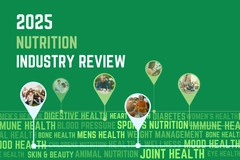“Catcher of the rye”: New gluten detection method to help industry meet “gluten-free” regulatory demands

22 Aug 2019 --- Scientists from Australia’s national science agency, Commonwealth Scientific and Industrial Research Organisation (CSIRO), can now detect gluten in any food and show which grain it comes from. This makes it simpler for food companies to correctly label products, thereby avoiding cross-contamination and determining risk. For instance, some people have a wheat allergy, but may not be affected by barley; or some people with celiac disease can tolerate pure, non-contaminated oats. A growing number of people are aware of gluten in the diet, and choose to avoid it either on a medical or voluntary basis. Clearer labeling is, therefore, of paramount concern.
“The new method for rye adds to our previously developed methods for wheat, barley, oats. We can now complete the set and this will enable food manufacturers to not only detect gluten, but determine which type of gluten in present,” Michelle Colgrave, Protein Analytics Expert with CSIRO, tells NutritionInsight.
“Being able to detect any protein in diverse foods and beverages will help food companies ensure that what’s in the pack is what’s on the pack, and help consumers trust pack labeling around gluten-free claims,” she adds.
Although only 10 percent of the Australian population suffer from celiac disease or gluten tolerance, often referred to as non-celiac gluten sensitivity, avoiding gluten for health reasons is a rising trend. A recent study in the British Medical Journal highlighted concerns around non-medical gluten-avoidance. It can, for instance, lead to reduced intake of “heart-healthy” whole grains. While a University of Minnesota study found that while seeking gluten-free foods could be indicative of an overall interest in health or nutrition among young adults, this group may also be more likely to have unhealthy weight control behaviors.  The new method can help industry meeting “gluten-free” regulatory demands.
The new method can help industry meeting “gluten-free” regulatory demands.
Seeking a simple solution to a complex issue
Current commercial tests can only tell that gluten is present in a food but not the grain it originates from. The various detection kits currently available also give variable results of how much gluten is present.
Detecting gluten proteins in their original grain is relatively simple. However, when they’re in finished food products that have been baked, extruded or processed in other ways with other ingredients such as salt and sugar, it is a lot more complex.
Published in the American Chemical Society’s Journal of Proteome Research, the study analyzed 20 cultivars of rye from 12 countries, which they milled into flour, extracted the gluten proteins and used high-resolution mass spectrometry to identify and quantify the proteins. The analysis revealed six proteins specific to all rye varieties that don’t appear in other grains.
The team tested a range of commercial flours, breakfast cereals and snack foods and detected the six rye proteins in all the foods that contained rye as a labeled ingredient. They found one “gluten-free” breakfast cereal that contained trace amounts of rye, which did not appear on the ingredients list, and one sample of flour from the wheat-related grain, spelt, which was contaminated with about two percent rye.
Understanding the limits of current models
The communication of gluten’s presence in food is paramount for those who have celiac disease or gluten tolerance. As there is no currently available cure, patients have to manage their conditions with a strict gluten-free diet. Accurate labeling is the first and foremost way to safeguard the health of these consumers.
Colgrave details the importance of understanding the limitations of current testing methods for the food industry. Moving forward, work must be done with the food industry and commercial testing laboratories to help commercialise the technology.
Moving forward, work must be done with the food industry and commercial testing laboratories to help commercialise the technology.
“Food manufacturers are working hard to deliver the right products and are using the tests currently available to them. However, the tests are not all fit-for-purpose,” she says. “Creating awareness of such limitations will allow manufacturers to select the appropriate test (whether it be ELISA or LC-MS) on the starting material or the finished product depending on the accuracy in that test material. We also need to see the adoption of these complimentary test methods within analytical facilities to provide access to the wider food community,” she explains.
The next steps are to validate the method’s ability to quantify the level of glutens present in a food accurately. Secondly, work must be done with the food industry and commercial testing laboratories to help commercialise the technology.
Modern biotechnology on gluten
Aside from cleaner and clearer labeling, modern biotechnology techniques are also being applied to the gluten space.
Potentially, gluten could be entirely removed from the wheat genome or other target. So the use of gene-editing tool CRISPR/Cas9 could present future opportunities, say the University of Wageningen researchers.
Also, the world’s first vaccine for celiac patients, Nexvax2 from ImmusanT., secured fast-track designation from the US Food and Drug Administration (FDA) in the first half of this year.
By Laxmi Haigh












